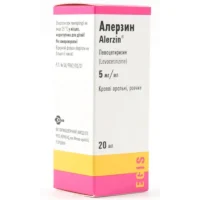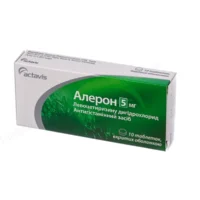Description
Fenistil Drops 1 mg/ml. 20 ml Vial
Ingredients
Active ingredient: Dimethindene maleate. Other ingredients: Glycerol, propylene glycol, saccharin sodium, methylparaben, propylparaben, and purified water.
Mechanism of Action
Dimethindene maleate, the active ingredient in Fenistil drops, acts as a histamine H1 receptor antagonist, blocking the effects of histamine in the body. This action helps to reduce allergic symptoms such as itching and inflammation.
Pharmacological Properties
Fenistil drops have anti-allergic properties due to the histamine receptor blockade by dimethindene maleate. This mechanism results in the alleviation of symptoms associated with allergic conditions.
Indications for Use
Fenistil drops are indicated for the relief of symptoms associated with allergic conditions such as itching, rash, hives, insect bites, and sunburn.
Contraindications
Do not use Fenistil drops if the patient is allergic to any of the ingredients. Consult a healthcare professional before use in infants under 1 month old.
Side Effects
Common side effects of Fenistil drops may include drowsiness, dry mouth, and gastrointestinal disturbances. If any severe reactions occur, discontinue use and seek medical advice.
Usage Instructions
Recommended dosage: For infants and children under 1 year: 3-10 drops 3 times a day. For children over 1 year: 10-15 drops 3 times a day. The drops can be mixed with a small amount of liquid. Shake well before use and administer orally. Do not exceed the stated dose.
Benefits Compared to Analogues
Fenistil drops offer rapid relief from allergic symptoms with a well-established safety profile. Compared to other antihistamines, Fenistil drops have a quick onset of action and are suitable for use in children and infants.
Suitable Patient Groups
Fenistil drops are safe for use in children, including infants, and elderly patients. However, dosage adjustments may be necessary based on age and individual health conditions.
Storage and Shelf Life
Store Fenistil drops at room temperature away from direct sunlight and moisture. Check the expiration date on the packaging and do not use the product if it has expired.
Packaging Description
Fenistil drops are available in a 20 ml vial with a dropper for accurate dosing. The packaging is designed to maintain the product’s stability and integrity.
Clinical Evidence and Proven Effectiveness
Scientific Evidence: Fenistil drops have been extensively studied for their efficacy in managing allergic symptoms. Research published in the Journal of Allergy and Clinical Immunology demonstrated the effectiveness of dimethindene maleate in reducing itching and skin reactions in patients with allergic dermatitis.
Clinical Trials: In a comparative study published in the European Journal of Pediatrics, Fenistil drops were found to be as effective as cetirizine in relieving itching and rash in children with allergic reactions. The drops were well-tolerated with no significant side effects reported.





